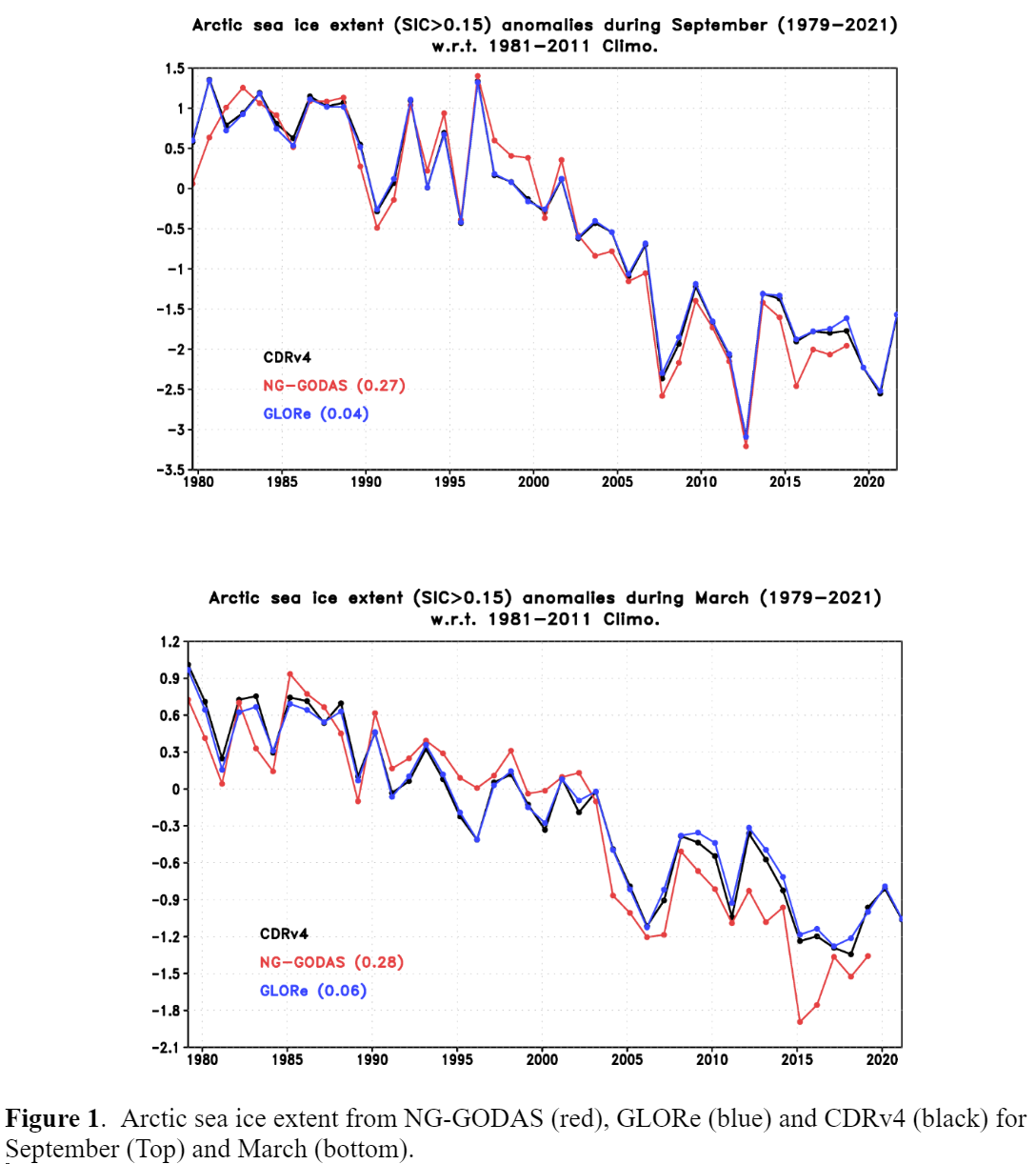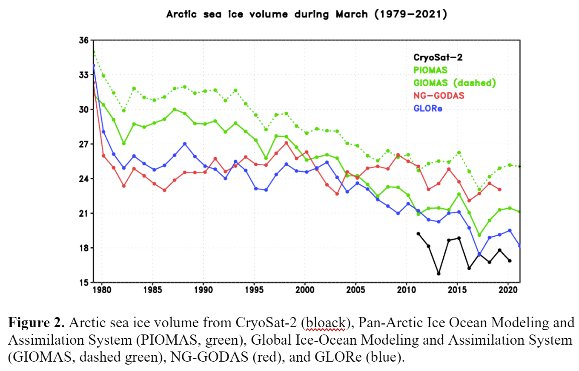The Climate Prediction Center (CPC) improves sea ice subseasonal outlooks
February, 2024
The Climate Prediction Center (CPC) started issuing routine sea ice subseasonal (week 1 to week 6) and seasonal (month 1 to month 9) outlooks in 2018 based on an experimental sea ice prediction system (CFSm5) modified from the National Centers for Environmental Prediction (NCEP) Climate Forecast System version 2 (CFSv2). Sea ice forecasts have been shown to be improved in CFSm5 over the NCEP operational CFSv2 during melt seasons. Yet the forecast skill in both CFSm5 and CFSv2 for freeze-up seasons has remained low.
The goal of this project is to improve sea ice predictions with an upgraded sea ice forecast system based on NCEP Unified Forecast System (UFS) prototypes, which uses FV3, MOM6, and CICE6 as its atmospheric, oceanic, and sea ice components. In FY23 the program worked to transition to the UFSP5 for real-time forecasts, develop an upgraded ocean and sea ice initialization, and test the impact of upgraded UFS prototype 8 and initialization.
For FY23 the program accomplished the following:
The UFSP5-based sea ice forecast system has been transitioned for routine forecasts. This includes 45-day forecasts initialized from each Sunday with 16 ensemble members for subseasonal outlooks for 6 target weeks and 9-month forecasts initialized from each month with 20 ensemble members for seasonal outlooks. This system replaces the previous CFSm5-based system and provides routine forecasts for stakeholders and forecasters. For example, the NWS Alaska Region uses CPC sea-ice forecasts for the next few weeks to seasons to provide guidance to the DOI, USCG and other partners. CPC’s sea ice predictions are also used by Alaska Center for Climate Assessment and Policy (ACCAP) in Alaska Region Climate Outlooks. CPC also provides our forecasts to Sea Ice Prediction Network (SIPN).
Development of a new Global Ocean Reanalysis (GLORe) for further improvement of sea ice predictions. GLORe is an extension of the Next Generation Global Ocean Data Assimilation System (NG-GODAS) with modifications to meet the operational requirements for real-time update, and to meet the needs for improved accuracy of sea ice concentration and upper ocean temperature which have strong impacts on subseasonal to seasonal sea ice predictions. Sea ice extent is much improved in GLORe compared to NG-GODAS (Figure 1). GLORe also reproduced more realistic sea ice thickness and sea ice volume than NG-GODAS (Figure 2). In addition, temperature and salinity accuracies are also improved in GLORe compared to that in CFSR.
Hindcast experiments were carried out with UFS Prototype 8 (UFSP8) initialized from GLORe for 45-day forecasts and 9-month forecasts. These were then compared with forecasts from other configurations.
For more information on this project contact the Project Manager Wanqiu Wang at Wanqiu.Wang@noaa.gov.




